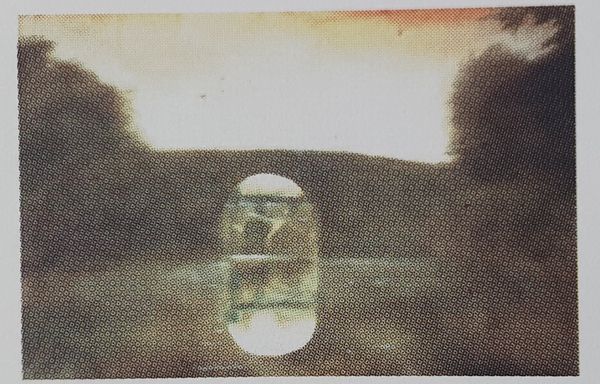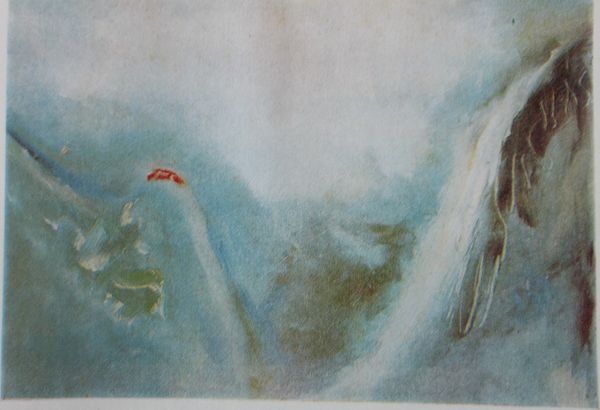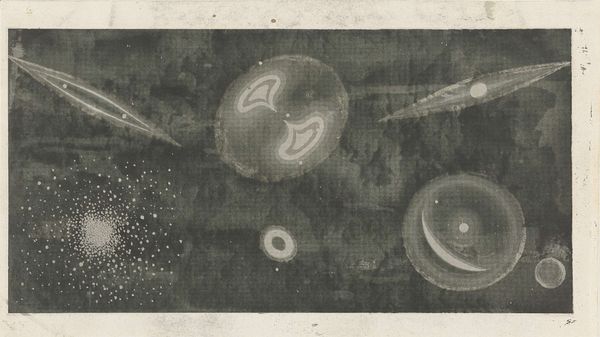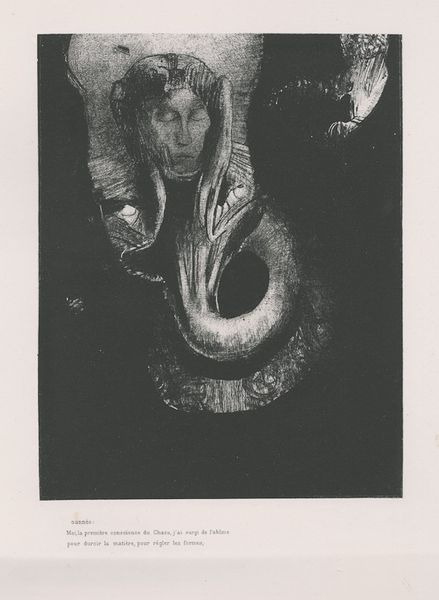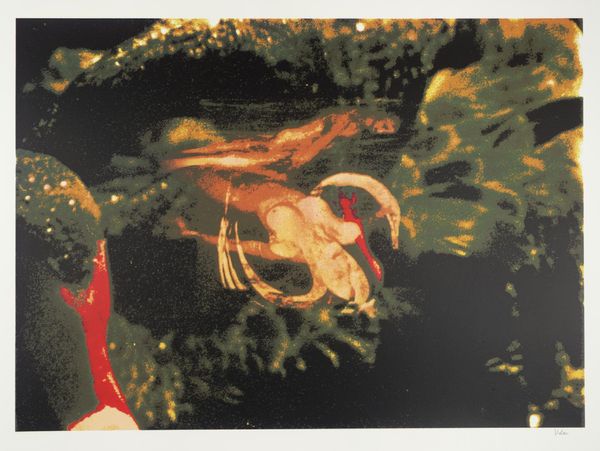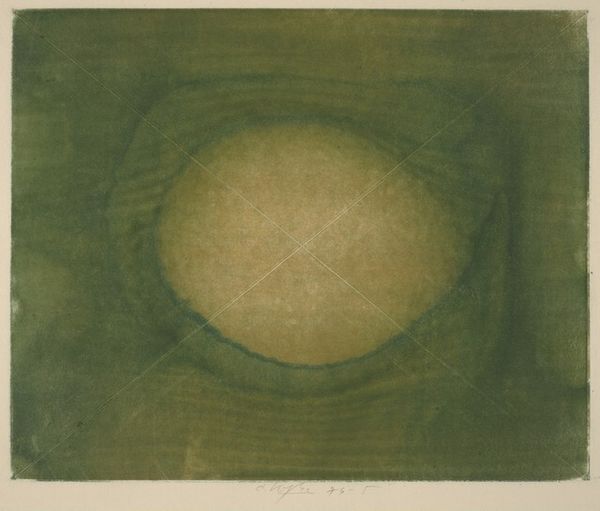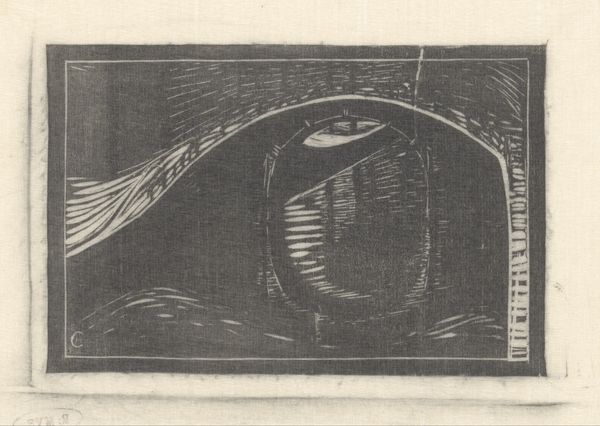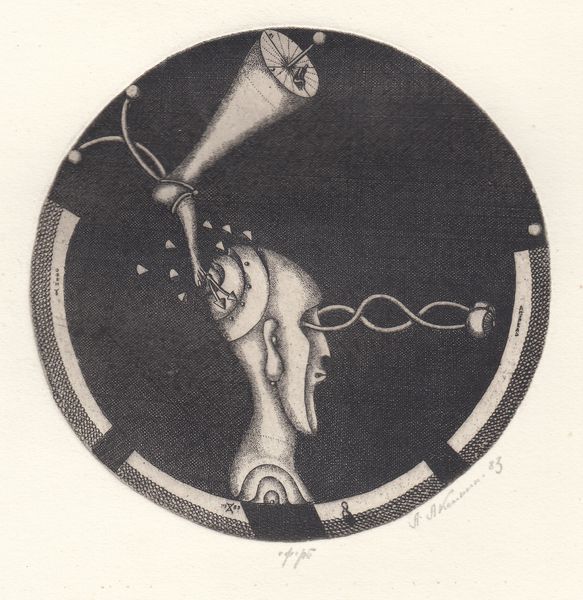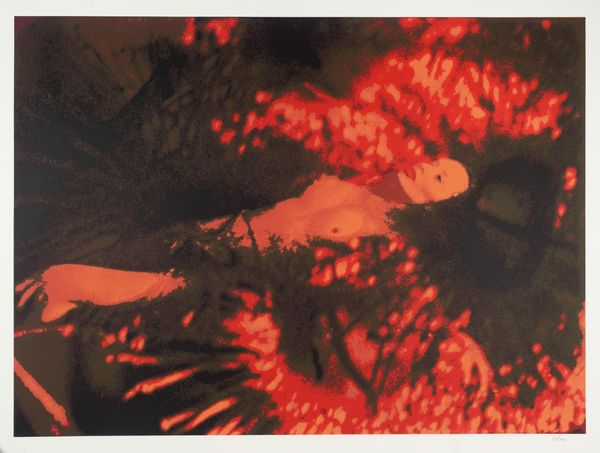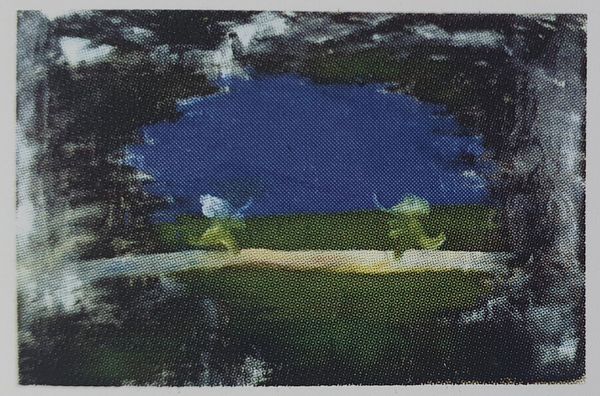
painting, watercolor
#
portrait
#
contemporary
#
painting
#
figuration
#
oil painting
#
watercolor
#
abstraction
Dimensions: 40 x 60 cm
Copyright: Oleg Holosiy,Fair Use
Curator: This is Oleg Holosiy’s "Mascaron," a striking portrait rendered around 1990. The painting appears to be an oil and watercolor composition. What's your initial reaction to it? Editor: The muted colors and simplified form create an eerie, almost spectral presence. It reminds me of a death mask, but rendered in a purposefully childlike style, as if stripped down to its essence. It begs the question of representation. Curator: Holosiy often imbues his paintings with layers of symbolic meaning, drawing from Ukrainian folklore and classical mythology. A "mascaron" is traditionally an architectural ornament, often a grotesque face intended to ward off evil spirits. Does that tradition resonate here? Editor: Definitely, but twisted. The title, juxtaposed with this unsettlingly simple representation, creates tension. There's a power dynamic at play here. It feels like an exploration of identity under surveillance, reflecting perhaps the socio-political realities of Ukraine during the post-Soviet period. The lack of precise detail denies us a recognizable subject. Curator: Consider, too, the expressive use of line. The bold, almost cartoonish outlines are suggestive, almost totemic. Note the treatment of the eyes—hollow yet piercing. There's an emotional weight communicated with very economical means. This aligns with archetypes: the clown, the fool, or perhaps a disembodied deity. It evokes themes of disguise, duality, and hidden truths. Editor: I'm particularly struck by the brow and nose; how they become an abstracted single unit, almost forming a question mark. This prompts me to consider the notion of interrogating cultural anxieties present during Ukraine’s transitional period after declaring its sovereignty, and what representation even means during rapid and drastic cultural and ideological shifts. It demands an answer. Curator: In its seeming simplicity, “Mascaron” invites viewers to consider the multifaceted nature of identity, belief, and the lingering presence of ancient symbolisms. Editor: And perhaps, how these archetypes haunt even the most 'modern' of portraits, demanding we address the socio-historical narratives that made their creation possible. A deceptively simple portrait that raises profoundly complicated issues.
Comments
No comments
Be the first to comment and join the conversation on the ultimate creative platform.
